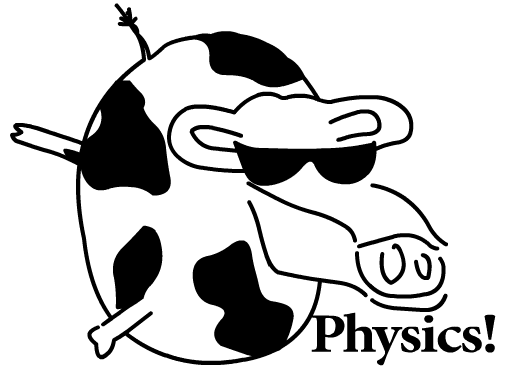Collaboration When the C is Circled
- Mark Schober

- Aug 12, 2020
- 3 min read
Updated: Apr 29, 2021

A number of Modelers have been asked to remove resources from their websites (including me) as this violates AMTA's fair use policy, and this policy has been discussed energetically in Modeling listserves. The discussion about posting Modeling resources hits close to home for me. As a past president of AMTA, curriculum editor, workshop leader, and extensive poster of Modeling-related resources (but never assessments or answer keys), I’m in this pretty deep.
When I was on the AMTA board, we proposed a dynamic curriculum repository that would allow Modelers to post and tag materials so that members visiting the site could choose from posted materials and customize their course curriculum much like choosing an iTunes playlist. Unfortunately, the programming needs of such a site are far more demanding than we can ask of our volunteer webmasters and more expensive than our budget can support. Years later, the AMTA website still only handles basic functions of the organization.
Our lack of a user-friendly AMTA-endorsed electronic collaboration platform has left a void that has been filled by blogs, twitter feeds, and websites of Modelers who are hungry for that collaboration. Indeed, I would argue that the innovations that have arisen in the past five years have transformed and fulfilled the promise of Modeling Instruction as greatly as the innovations of our first 20 years. AMTA certainly has the right to ask us to pull down materials we have posted, but doing so in the absence of a suitable sharing platform shoots our organization in the foot, suffocates idea sharing, and isolates us from reaching new teachers.
Back in the old days of the internet, I posted my versions of Modeling physics materials for my students and as a resource for other teachers. I think it’s safe to say that a few people found their way to Modeling through that site. Jane Jackson praised it as a “goldmine.” After years of work revising and incorporating my ideas and the ideas of others into the physics materials, my versions became AMTA's "official" copyrighted versions. As a result, keeping my versions posted on my site violated AMTA's copyright for which I was asked to remove my materials. The design of my old site made removing the offending files possible only by deleting the entire ten-thousand-file site, so that’s what I did this week.
Everything I’ve worked on I've christened with "copyright AMTA” so that it points back to the framework in which I work while attempting to protect it from some publisher trying to scoop up our work. But in doing so, I’ve become a sharecropper for AMTA: AMTA gets credit for my work (fine) but prohibits me from sharing that work with others to aid their teaching and to gain feedback that fuels subsequent improvements (I’m not okay with that). Stifled sharing results in stagnation and starvation — the intellectual death of a grassroots community.
As the community of Modelers has grown and expanded in content breadth and school diversity, AMTA's strength as a grassroots organization continues to come from the open exchange of ideas around a common pedagogical philosophy. As we implement the Modeling Instruction approach in our classrooms daily, we engage in testing and revising curriculum materials and teaching approaches -- discovering ever better ways to reach our students in our varied environments. The diversity is essential to our success and relevance as a teaching community — we should encourage curriculum development and sharing under a Creative Commons license for our classroom materials as others have advocated. Teacher notes, assessments, and answer keys should continue to be restricted to members, but AMTA needs to provide a viable secure platform for sharing, collaboration, and innovation here as well. Our Modeling community of bloggers, web developers, and social media experts provide an invaluable service to AMTA and the Modeling Community and bring far more people and their membership dollars to AMTA than a policy of locking the whole shebang behind a paid password. Let’s treat these members of our community as heroes, not pariahs.
I’m now working with the best set of physics materials I’ve ever used — it’s Modeling, of course, but it’s quite different than what I inherited in 1998 or what I shared in the 2013 version. It now has a heavy influence from Kelly O’Shea’s fantastic ideas. It’s tuned for 10th graders and uses a slightly different sequence, extensive graphical problem solving, goalless problems, multiple-model problem solving, individualized homework, and a transparent and easy-to-manage system of standards-based-grading involving over 100 new assessments. And more than ever, it isn’t even about what is written on the page, it’s about how I shape my daily interaction with students to contextualize physics in their lives. And my students are getting the best FCI scores of my career.
If only I could share these resources and get some feedback from y’all. . .
Posted to the AMTA listserve on January 29, 2016






A bit of a nerco comment, but thanks for posting this. I'm in my second year teaching "advanced" physics, but its been a loooong time since I was a student in it. While I like the ideas behind modeling, I've been struggling with the 2013 AMTA curriculum. For my population it needs more scaffolding, assumes students can make bigger leaps in knowledge transfer than they can [although this is partly me and my inexperience], and some inconsistencies. The lab equipment is tough too. I have some nice vernier sensors, but I only have two low friction carts and no bowling balls. I've been looking for updated or different modeling curriculum but just have not found any. This post explains partly…